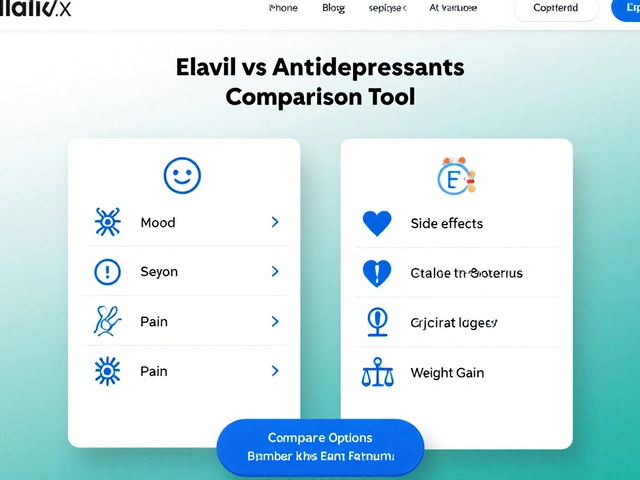Ever sat in a waiting room, scrolling through your phone, and seen the word "Provera" pop up on every poster or leaflet? If your curiosity ever peaked right there, you’re not alone. Provera, known by its medical name medroxyprogesterone acetate, is one of those meds that tends to fly under the radar unless your doctor brings it up. But just because you don’t see loud ads for it everywhere doesn’t mean it isn’t important. From helping women get their cycles back on track to easing weird symptoms around their period, Provera has built up a quiet but loyal following in the world of women’s health.
What is Provera and How Does It Work?
First off, let’s get real: Provera is not some magical pill that promises a perfect period or a smooth ride through menopause. It’s a type of medication called a progestin, which acts much like the natural hormone progesterone your body makes. Doctors prescribe it for a range of women's health issues, but its story started back in the 1950s, and it's been a staple ever since. The main *thing* Provera does? It tells the lining of the uterus to chill out, regulate, or shed if needed. That’s why it’s often brought up if you’re dealing with irregular periods or even no periods at all for a few months.
One of the biggest areas where Provera shines is when periods go missing. Skipping periods isn’t just annoying—sometimes it points to bigger hormone imbalances, weight changes, or stress. Your doctor might hand you a 10-day supply of Provera, and within a week or two, most women get a period (or something very much like one). And boom, things seem – at least for a cycle – back in order. Provera can also be paired with estrogen therapy to protect the uterus for women going through menopause.
But it doesn’t stop there. Provera is also a key ingredient in certain types of birth control shots, like Depo-Provera, which gives three months of pregnancy protection with a single jab. There’s a lot of adaptability here—Provera’s usefulness isn’t limited to just one problem or one group of women. For instance, it’s sometimes given to help those with abnormal uterine bleeding or even endometriosis, which is the wild, ugly cousin of normal period cramps.
Here’s a fun fact: When researchers tried oral Provera for menstrual problems in the ‘60s, they didn’t expect it to double as a fire extinguisher for some of menopause’s worst symptoms, like hot flashes and out-of-control cycles. That versatility is a big reason why it’s still in use decades later. The usual Provera dose ranges from 2.5 mg to 10 mg per day, with treatment plans spanning anywhere from a few days to several weeks, depending on what’s up.

Side Effects: What Should You Really Expect?
If you ask anyone who’s taken Provera about side effects, chances are you’ll get a laundry list. But it’s different for everyone—some women breeze through without a second thought, while others find themselves surprised. The top side effects? Mood changes, headache, bloating, and some spotty bleeding. A few women get breast tenderness. Others, strangely enough, notice acne or a weird appetite spike—either way, the bathroom mirror doesn’t lie.
For the stats junkies, here’s a quick look at what shows up most often, based on clinical trials and FDA reports. Check out the table below:
| Side Effect | Percentage of Users Affected |
|---|---|
| Spotting/Irregular Bleeding | 30% |
| Headache | 15% |
| Mood Changes | 8% |
| Breast Tenderness | 7% |
| Nausea | 4% |
It’s not all doom and gloom. Plenty of people sail through a round of Provera and barely notice anything beyond a slightly different period. But if you already struggle with migraines or you’re particularly sensitive to hormones, you might want to keep an eye on your symptoms. Sometimes, heavier side effects like sudden vision changes, chest pain, or severe leg pain can point to more serious issues, but those are pretty rare.
Weight gain is one of the most debated Provera myth-vs-reality topics. While studies (the genuine peer-reviewed kind, not your cousin’s TikTok) show a small bump in weight for some people, it’s usually only a couple pounds. Much of the extra weight is actually water. Still, anyone who feels like their cravings are spiraling or they’re holding extra bloat, it’s worth chatting with your doc.
If you’re using Provera as birth control (like the shot version), don’t expect immediate reversal—fertility can take several months to return, with some women waiting half a year or longer for cycles to bounce back. The positive flip side? No daily pill and a lower risk of forgetting.
To keep things steady, try these tips:
- Stay hydrated—water helps counteract Provera’s bloat.
- Keep a period diary (apps work too). Noticing a pattern can help your doctor fine-tune your dose.
- If you’re moody or sad, be open with your doc. Sometimes a tweak helps.
- Don’t freak out over a missed period in the first month; give your body a hot minute to adjust.
All pills come with pros and cons, and Provera is no exception. A lot of women find the benefits outweigh the downsides; just know what to look for and don’t be afraid to speak up if something feels off.

Who Might Use Provera—and Tips for Making It Work
Doctors hand out Provera scripts for all sorts of reasons, so don’t be surprised if it comes up at your next gyno visit. The most common use is for women who aren’t getting periods—whether due to stress, sudden weight shifts, or hormonal issues like PCOS (polycystic ovary syndrome). Sometimes, girls in their teens who never quite get on a regular cycle get a little nudge from Provera to kickstart things.
It’s also useful for folks who bleed too much or too long. If your period feels like a marathon or drains your energy every month, Provera can help dial back the chaos. It’s especially valuable for women on hormone therapy or those in perimenopause—during the run-up to menopause when periods can do all sorts of bizarre things. Provera pairs nicely with estrogen to protect the uterus, which is essential because estrogen without a balancing hormone can sometimes set up trouble, like uterine cancer.
Provera isn’t only for people with periods. For example, in IVF (in vitro fertilization) clinics, it’s sometimes used as part of fertility treatment protocols. And if your doctor suspects your missing period isn’t just stress (but maybe early menopause or something rarer), Provera can help sort out what’s actually going on. During workups for infertility, it’s almost a routine step to see if your uterus and hormone system respond correctly.
For those dealing with endometriosis, Provera offers a way to keep that aggressive tissue growth in check. It’s not a cure-all, but it can make a real dent in symptoms for a lot of women. It’s also helpful for managing abnormal uterine bleeding linked to certain medical conditions.
Here’s the thing about Provera that nobody tells you: consistency counts. If your doctor says take it at the same time each day, they mean it. Provera likes a routine. And don’t be shy with the questions—doctors see women struggling with period chaos all the time and would honestly rather you called twice than worried in silence.
Before starting Provera, you’ll usually get a quick review of your health history, just to make sure nothing stands out as a risk (think blood clots, breast cancer, or unexplained vaginal bleeding). And if you’re planning a pregnancy soon, let your doctor know. Provera can mess with ovulation for a bit, so give yourself some buffer time after you stop.
Scheduling follow-up visits seals the deal. Whether you’re using Provera for periods, heavy bleeding, or birth control, looping back with your doc after a month or two can help fine-tune your regimen and make sure nothing weird pops up. And if you notice anything unexpected, don’t play the waiting game—ask about it right away. You’re your own best advocate, and doctors appreciate patients who keep it real about side effects and questions.
Provera might not be glamorized on social media, but when you need it, there’s a reason so many doctors trust it for regulating cycles, handling symptoms, and supporting hormone balance. That reliability—over 70 years strong—means *provera* deserves a spot in any real talk about women’s health meds. Tucked between the lines of clinical trial stats and user stories is a medicine that keeps things moving for millions, in ways that are often invisible until you really need the help.








I took Provera for 3 months after my cycle vanished for 6 months. Honestly? It felt like my body finally remembered how to work. No drama, just a period. 🙌
This is why America needs to stop treating women like broken machines! Provera? It's just another chemical band-aid for a society that won't fix stress, junk food, and 80-hour workweeks! You think your uterus needs a reset? Try sleeping! Try eating real food! Try not being a zombie!
I appreciate the breakdown. I was worried about the mood swings, but my doc said it’s usually temporary. Took it for PCOS and honestly? Worth it. My cycles are predictable now. No more panic when I miss a period.
The table is inaccurate. The FDA reports 37% incidence of irregular bleeding, not 30%. Also, 'spotting' is not a side effect-it's a symptom of hormonal disruption. Terminology matters.
Provera saved me after my miscarriage. My body was a mess. Doc said take it for 10 days, and boom-period came back. I cried. It felt like my body was listening again. 💕
omg yes!! i took it and thought i was gonna turn into a crying zombie but it was actually chill?? like i got my period and didn't feel like i wanted to scream at the sky?? weirdly peaceful?? 🤯
Wait-so you’re telling me a 70-year-old synthetic hormone is safer than just… eating better? Or sleeping? Or reducing stress? This is what Big Pharma wants you to believe. They don’t want you healed-they want you medicated forever. Provera? More like Pro-Debt.
I’m from India and my cousin used this for PCOS. She said it worked but made her super tired. Also, she had to wait 8 months to get pregnant after stopping. Not quick. But it worked. Doc said it’s common here too.
I’ve been on this for six months. I feel like I’ve been emotionally hollowed out. I don’t cry anymore. I don’t laugh. I just… exist. I used to write poetry. Now I stare at the wall. Is this what balance looks like? Is this what they call ‘regulation’? Or is this just chemical erasure?
Oh wow. A whole article about a 1950s drug that’s basically a hormonal sedative for women who ‘can’t handle their periods.’ How progressive. Next you’ll tell me we should all just take a nap.
Provera? In my village, we used neem leaves and jaggery. But my sister went to the city, got this pill, and now she has regular cycles. I’m not judging. Just saying: sometimes old ways don’t fit modern lives. That’s not weakness. That’s adaptation.
I used Depo-Provera for 4 years. Stopped. Took 14 months to get pregnant. No regrets. But if you’re planning kids soon? Don’t start it unless you’re ready to wait.
This whole thing is just a cash grab. Who even needs this? Just don’t eat sugar and you’ll be fine. Everyone’s so fragile now.
Provera is the quiet assassin of women’s autonomy. It doesn’t cure-it suppresses. It doesn’t heal-it silences. And we call this medicine? No. This is societal compliance disguised as a prescription. The real side effect? We’ve stopped asking why our bodies are broken in the first place.
Provera? That’s the same stuff they give to prisoners to control aggression. Funny how it’s now a ‘women’s health’ solution. Coincidence? I think not.
I was skeptical but my doctor explained it well. It’s not perfect, but it’s one of the few tools we have that actually works for some of us. Thanks for the honest breakdown.
Provera is part of the government’s plan to control female fertility. The CDC has a whole dossier on it. You think the ‘irregular bleeding’ is accidental? It’s a feature. They want you dependent.
You got this. I was scared too. Took it, felt weird for a week, then boom-normal. You’re not broken. Your body’s just adjusting. Keep going. 💪
I used it for endometriosis. It helped. Then I got pregnant naturally after stopping. So yeah, it’s not magic. But it’s not evil either. Just… a tool.